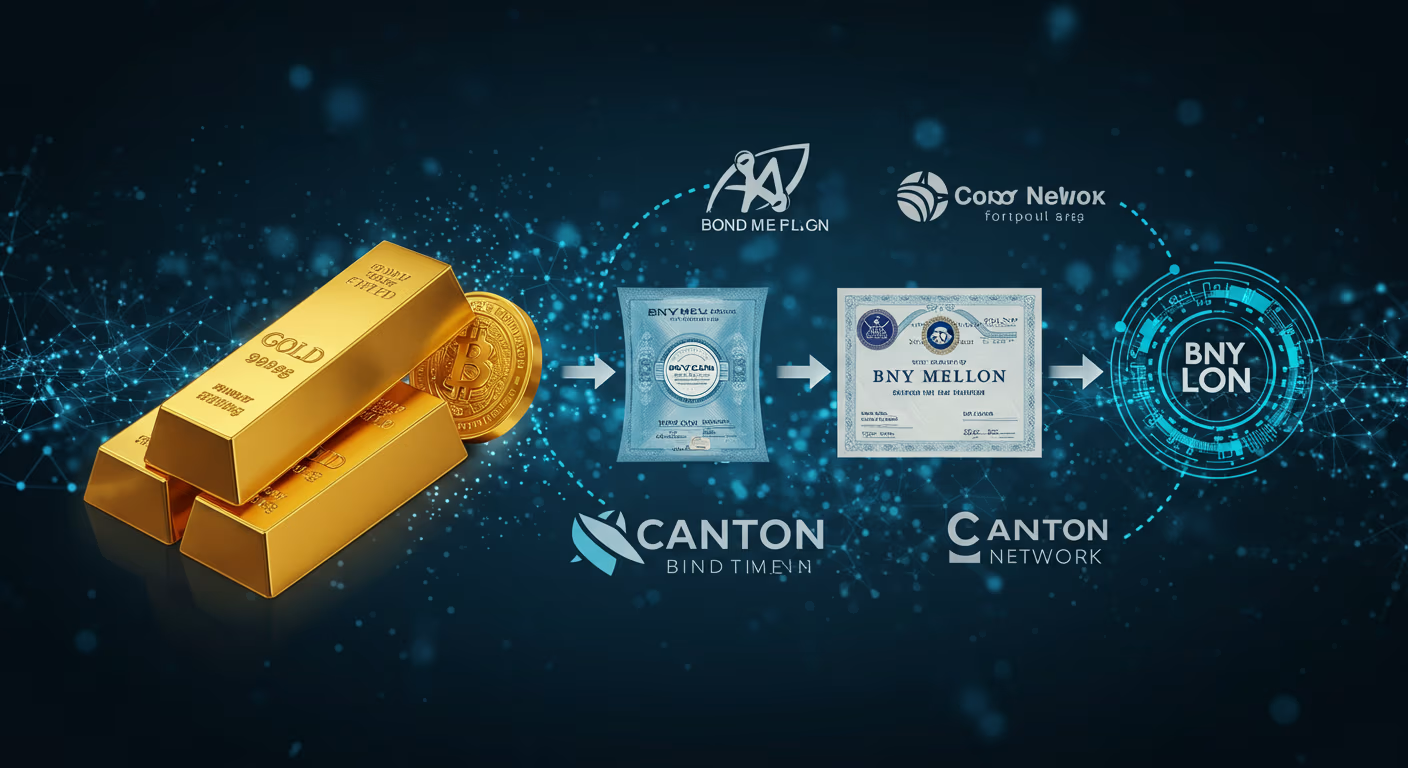A new chapter in institutional finance has begun with the official launch of the Canton Network—a privacy-enabled blockchain infrastructure developed specifically for regulated financial markets. Backed by a consortium of top-tier global institutions, including Goldman Sachs, BNY Mellon, and other major players, the network aims to bring real-world asset tokenization to scale, starting with pilot programs for tokenized bonds and gold.
As traditional finance moves closer to full-scale blockchain integration, the Canton Network stands out for its focus on interoperability, compliance, and transaction privacy. Rather than compete with public chains like Ethereum or Solana, Canton is built to meet the needs of banks, asset managers, and custodians who must adhere to strict regulatory standards while still embracing the efficiency of distributed ledger technology.
Here’s a breakdown of what the Canton Network is, why it’s significant, and how these pilot projects with tokenized bonds and gold could reshape asset issuance, trading, and settlement in the digital age.
What Is the Canton Network?
The Canton Network is a decentralized blockchain platform developed by Digital Asset, the company behind the DAML smart contract language, and supported by a coalition of financial institutions. Unlike permissionless networks, Canton is designed to allow regulated entities to operate in a decentralized environment with selective privacy, high performance, and secure interoperability.
Its core features include:
- Data privacy: Parties can transact without revealing sensitive data to the entire network.
- Interoperability: Different applications, including custody, payments, trading, and compliance, can communicate seamlessly.
- Scalability and finality: It supports high-throughput, low-latency operations and instant settlement.
- Regulatory compliance: Institutions can enforce jurisdictional rules, AML/KYC protocols, and auditing requirements natively within the system.
The Canton Network is not a competitor to public blockchains—it’s a purpose-built financial infrastructure for real-world asset tokenization.
Why Tokenized Bonds and Gold?
Asset tokenization refers to converting the ownership rights of a real-world asset—like a bond or gold bar—into digital tokens on a blockchain. These tokens can then be traded, settled, and recorded with far greater efficiency than traditional paper-based systems.
Goldman Sachs and BNY Mellon have launched pilots using Canton to tokenize:
- Corporate bonds: Tokenized bonds offer real-time settlement, fractional ownership, and programmable features (such as automated coupon payments).
- Physical gold: Tokenized gold can be more easily transferred and traded, while still being backed by actual bullion held in custody.
By piloting these instruments on Canton, the institutions aim to:
- Reduce settlement risk
- Improve market liquidity
- Lower operational costs
- Enable 24/7 trading cycles
- Introduce programmable compliance and auditability
In essence, tokenized bonds and gold serve as ideal proving grounds for blockchain-powered capital markets.
Major Players Involved
The Canton Network launch has drawn a who’s who of the financial world. In addition to Goldman Sachs and BNY Mellon, other participants include:
- S&P Global
- Microsoft (providing cloud infrastructure)
- Deloitte (advisory and system integration)
- Cboe Global Markets
- Capgemini
- Digital Asset (core developer)
Each participant brings its own expertise—whether in market data, settlement infrastructure, compliance, or enterprise IT. Their collaboration reflects a shared belief that the future of financial markets lies in coordinated, secure, and scalable digital ecosystems.
Benefits for Capital Markets
Launching tokenized asset pilots on Canton has far-reaching implications:
- Instant, atomic settlement: With smart contracts handling delivery versus payment (DvP) in real time, the days of T+2 settlement could be numbered.
- Regulatory compliance by design: Token transfers can be restricted based on jurisdiction, investor type, or whitelist status—all coded into the asset.
- Programmable finance: Coupon payments, maturity events, and interest rate adjustments can all be automated with minimal manual intervention.
- Liquidity for previously illiquid assets: Fractional tokenization allows smaller investors to access gold or corporate bonds, and enables peer-to-peer secondary markets.
- Reduced counterparty risk: With verified, trustless transfers on a shared ledger, intermediaries and reconciliation steps are minimized.
Use Cases Beyond Bonds and Gold
While tokenized bonds and gold are initial use cases, the broader goal of the Canton Network is to support a full spectrum of digital financial instruments, such as:
- Tokenized real estate
- Equity and ETF tokenization
- Carbon credits and ESG-linked instruments
- Private credit and syndicated loan tokens
- Central bank digital currencies (CBDCs) integrations
As each application goes live, they can interact with each other securely within the same network, solving the current issue of blockchain silos.
Why This Matters for Crypto and Traditional Finance
Canton’s model offers a middle path between the permissionless ethos of crypto and the regulatory rigor of traditional finance. While it lacks the decentralization of public chains, it compensates with institutional-grade features that enable real-world adoption at scale.
Importantly, the Canton Network is helping to:
- Build institutional confidence in blockchain infrastructure
- Lay the groundwork for tokenized financial products that can coexist with legacy systems
- Encourage regulators to accept on-chain recordkeeping and smart contracts as compliant and auditable tools
- Spark innovation in settlement, custody, and financial engineering in a secure environment
This approach could also serve as a blueprint for how central banks, governments, and private firms can collaborate on future digital finance infrastructure.
Challenges Ahead
Despite its promise, Canton—and institutional tokenization in general—faces several hurdles:
- Regulatory uncertainty: Legal frameworks around asset tokenization vary by country and asset class.
- Market fragmentation: Competing tokenization standards and blockchain platforms could lead to silos and liquidity gaps.
- Onboarding complexity: Integrating blockchain with existing IT and operations systems is resource-intensive.
- Interoperability with public blockchains: It remains to be seen how Canton will interact with Ethereum, Avalanche, or other token ecosystems.
Still, the early momentum suggests that Canton’s pilots are more than just experiments—they’re signaling a shift toward the digital transformation of capital markets.
A Quiet Revolution in Motion
The launch of the Canton Network marks a significant turning point in financial infrastructure development. With heavyweights like Goldman Sachs and BNY Mellon leading the way, the network is well-positioned to demonstrate the real-world benefits of tokenizing high-value, low-liquidity assets like bonds and gold.
By enabling secure, private, and compliant transactions at scale, Canton offers a credible path forward for institutions ready to embrace blockchain without abandoning regulatory safeguards.
As pilot projects expand and standards evolve, the future of capital markets may well be written—not in ink—but in code.





